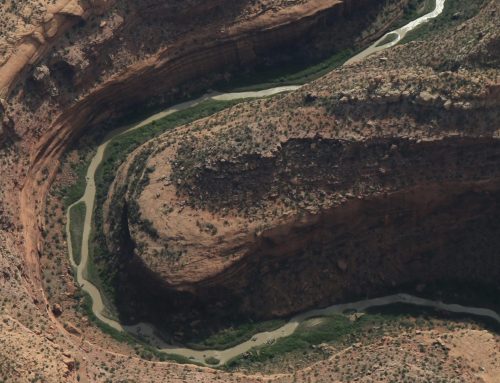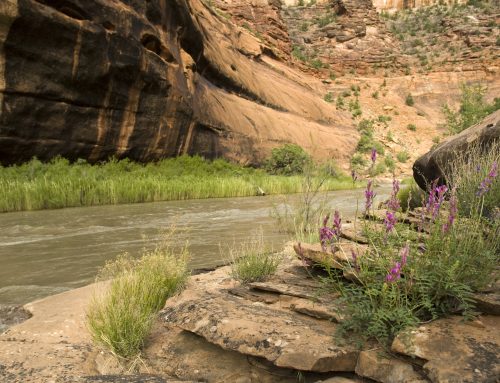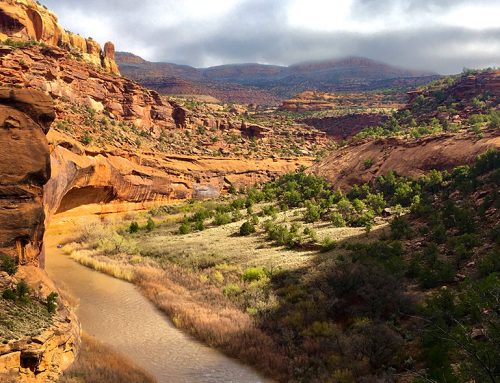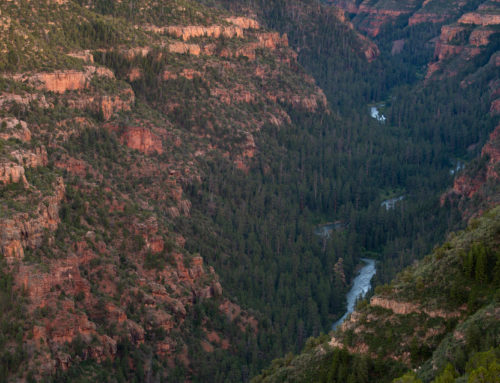By: Rica Fulton, Advocacy and Stewardship Director
Here in southwest Colorado, the San Juan Mountains have been blanketed with snow all winter; and by all accounts, it’s shaping up to be a record-breaking winter. In the West, almost all rivers are snowpack-driven, meaning the majority of flows come from melting snow. The San Miguel, Dolores, Animas, and San Juan basins are currently at 180% of the average snowpack from the 1991-2020 period of record, with cold weather persisting into April. After three years of intense drought, rivers and communities should have a reprieve from low flows and dry soil.
However, the amount of snowpack is not the only indicator of how much water ends up in our rivers. Soil moisture, temperature, dust, and wind all play critical roles in the timing and amount of runoff.
Dams and diversions also of course play a major role in the regulation of rivers. This year in particular, water managers will want to fill empty reservoirs across the West and ensure a full supply for water users. Rivers with relatively unregulated flows like the Yampa in Colorado and Utah, and Cataract Canyon outside of Moab, Utah will likely see particularly high flows during spring runoff and have longer periods with higher boatable flows than average.
Air temperature is clearly a critical factor when it comes to snow runoff and flows. As warm spring temperatures roll around, snow naturally begins to melt off into rivulets, creeks, and eventually rivers. However, climate change has led to some abnormally warm springs, or warm temperatures that begin earlier than on average. This phenomenon can mean that even if there is an average or above-average snowpack, a warm spell can lead to a hard-and-fast runoff, which may not be in sync with natural systems such as fish spawning or seed propagation, and shortens the recreational boating season.
Another critical factor to river flows is soil moisture, or the water content of soil. In recent years, summer monsoonal rains have been lackluster at best; which leave soils parched after the hot summer months. When the ground freezes during the winter after a dry summer and fall, it sits dormant waiting for water. When snow starts to melt, the soil acts like a sponge: soaking up the precious water before it runs into rivers, leading to less water making it into rivers. A few years ago, snowpack in the Dolores Basin was 86% of average, but only led to a 37% of average inflow into McPhee Reservoir.
Finally, wind and dust-on-snow also create challenging conditions for runoff. Dark-colored dust blown in from deserts in Utah and Arizona land on the mountains and absorb the energy from the sun, as opposed to bright white surfaces that reflect the sun’s rays. This creates conditions where melting is accelerated. In past years, a series of spring dust-on-snow events have occurred, leading to multiple layers of dust sandwiched between snowstorms.
While tree-ring data and historical knowledge shows that climate in the southwestern United States has always been variable, there is hard evidence that human-caused climate change is fueling weather extremes: primarily drought, but also flooding. Average temperatures are rising and precipitation patterns are changing, leaving natural systems in flux. Studies show that climate change has reduced the flow of the Colorado River by 20% in the past 20 years, and modeling shows that it will likely get worse.
As boaters, it is necessary to understand all the factors that lead to runoff and be aware of the impacts of an increasingly volatile climate. It is critical to be an advocate for clean energy and policies that reduce greenhouse gas emissions, educate yourself and your community about boating conditions, and give back to the rivers that you recreate on by volunteering, donating to non-profit organizations, or being an advocate in other ways.
As 2023 brings us a year to rejoice in healthy rivers and fun boating, we need to remember we need to work together and support our rivers even when there isn’t enough water to boat on.







